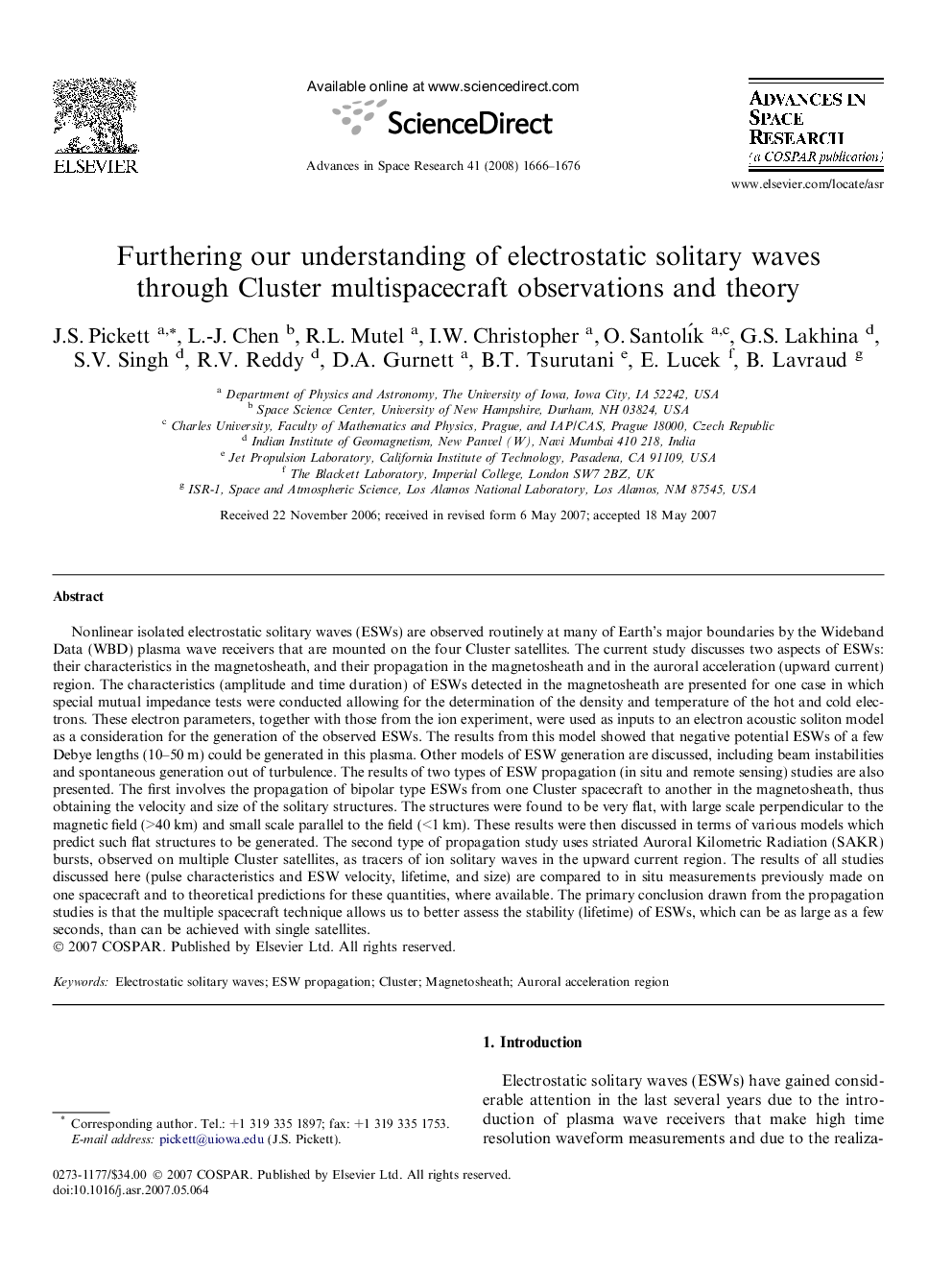| کد مقاله | کد نشریه | سال انتشار | مقاله انگلیسی | نسخه تمام متن |
|---|---|---|---|---|
| 1766397 | 1020148 | 2008 | 11 صفحه PDF | دانلود رایگان |

Nonlinear isolated electrostatic solitary waves (ESWs) are observed routinely at many of Earth’s major boundaries by the Wideband Data (WBD) plasma wave receivers that are mounted on the four Cluster satellites. The current study discusses two aspects of ESWs: their characteristics in the magnetosheath, and their propagation in the magnetosheath and in the auroral acceleration (upward current) region. The characteristics (amplitude and time duration) of ESWs detected in the magnetosheath are presented for one case in which special mutual impedance tests were conducted allowing for the determination of the density and temperature of the hot and cold electrons. These electron parameters, together with those from the ion experiment, were used as inputs to an electron acoustic soliton model as a consideration for the generation of the observed ESWs. The results from this model showed that negative potential ESWs of a few Debye lengths (10–50 m) could be generated in this plasma. Other models of ESW generation are discussed, including beam instabilities and spontaneous generation out of turbulence. The results of two types of ESW propagation (in situ and remote sensing) studies are also presented. The first involves the propagation of bipolar type ESWs from one Cluster spacecraft to another in the magnetosheath, thus obtaining the velocity and size of the solitary structures. The structures were found to be very flat, with large scale perpendicular to the magnetic field (>40 km) and small scale parallel to the field (<1 km). These results were then discussed in terms of various models which predict such flat structures to be generated. The second type of propagation study uses striated Auroral Kilometric Radiation (SAKR) bursts, observed on multiple Cluster satellites, as tracers of ion solitary waves in the upward current region. The results of all studies discussed here (pulse characteristics and ESW velocity, lifetime, and size) are compared to in situ measurements previously made on one spacecraft and to theoretical predictions for these quantities, where available. The primary conclusion drawn from the propagation studies is that the multiple spacecraft technique allows us to better assess the stability (lifetime) of ESWs, which can be as large as a few seconds, than can be achieved with single satellites.
Journal: Advances in Space Research - Volume 41, Issue 10, 2008, Pages 1666–1676